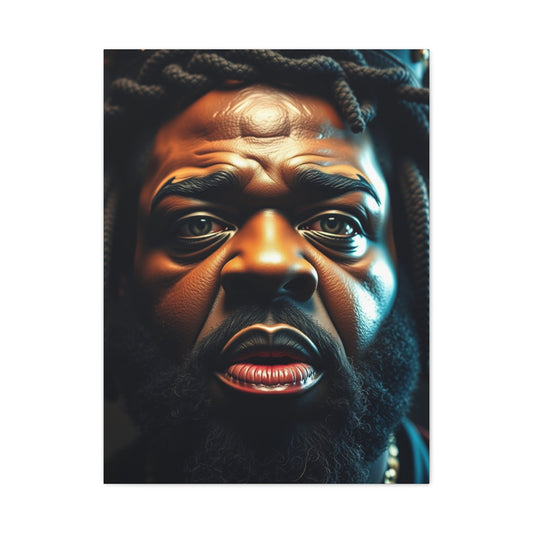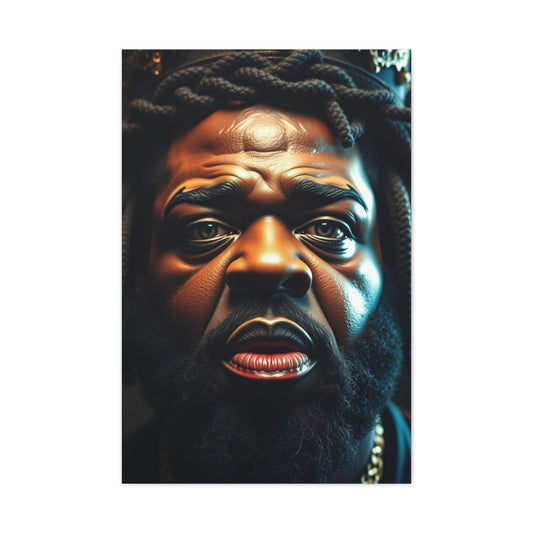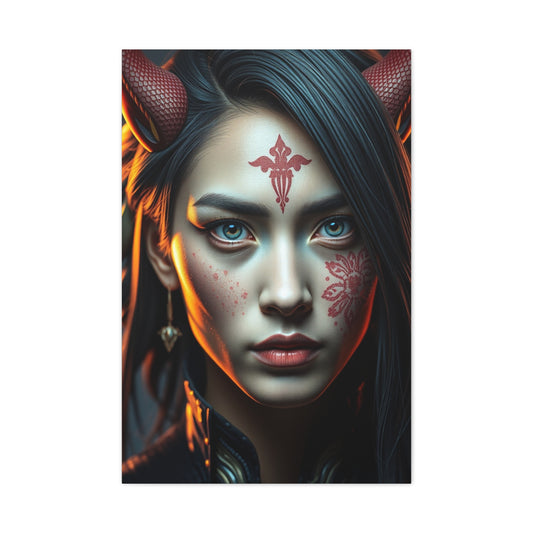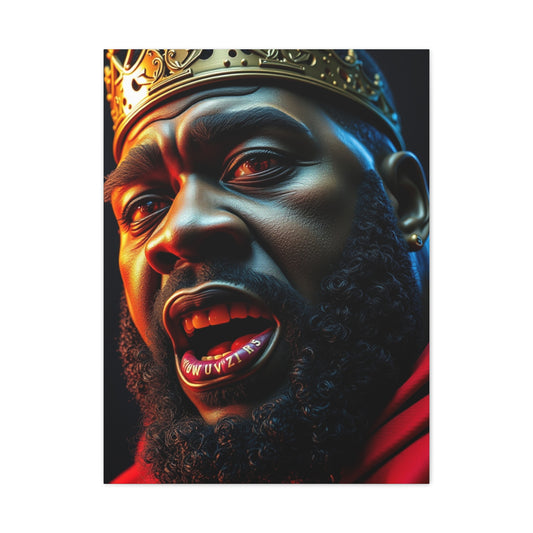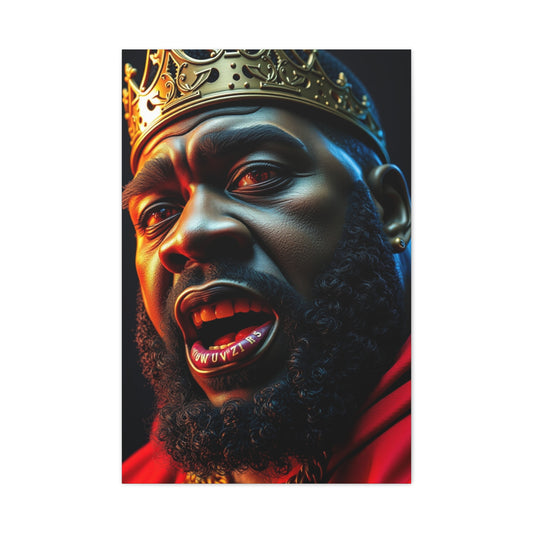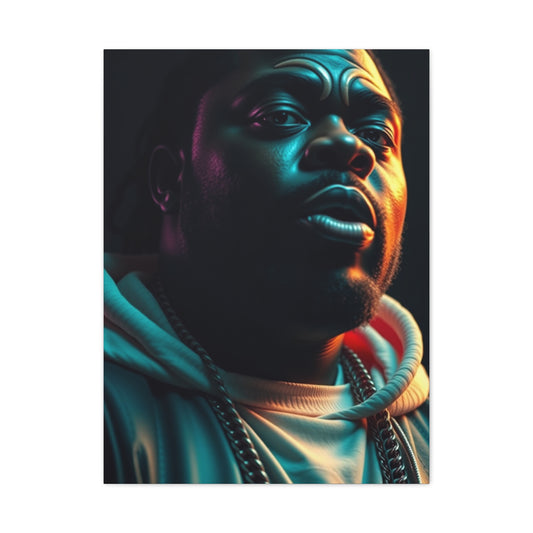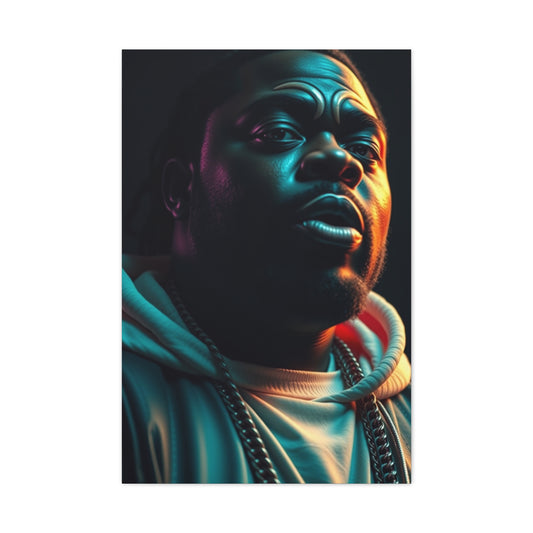Mastering the Art of Pen and Ink Rendering
Pen and ink drawing stands as one of the most respected and cherished forms of artistic expression. For centuries, this medium has captivated both artists and audiences alike, offering a dynamic way to capture intricate details, striking contrasts, and subtle tonal shifts in a single, expressive medium. The beauty of pen and ink lies in its ability to balance precision and creativity, producing works that are both technically refined and deeply imaginative. Arthur L. Guptill’s book Rendering in Pen and Ink is a timeless guide to mastering this craft, serving as an essential resource for artists at all levels. Whether you're just starting or have years of experience, this comprehensive text offers profound insights into the techniques and principles that elevate pen and ink rendering to a fine art.
Guptill’s book opens with a thorough exploration of the foundational tools and materials every artist should know about when working in pen and ink. The selection of pens, inks, and paper can make or break a piece of artwork, and understanding how each element interacts is essential. For instance, different pens and nibs will yield distinct line qualities, from delicate, fine details to bold, sweeping strokes, which is crucial for creating dynamic compositions. Guptill emphasizes the importance of choosing the right materials for specific tasks, whether you're working on intricate illustrations or bolder architectural renderings. The book also delves into the vast array of inks and papers available to artists, helping them to decide which combination will best achieve the desired effect. With a mastery of materials, an artist can infuse their drawings with unique textures and contrasts that reflect their style and vision.
Building Skills for Effective Pen and Ink Rendering
One of the most important aspects of pen and ink rendering is mastering the delicate art of line control. Guptill dedicates significant attention to this crucial skill, offering expert guidance on how to achieve the precision and fluidity that pen and ink drawings demand. Building proficiency in controlling the pen is not something that happens overnight, but with the right techniques, artists can develop a range of skills that will significantly enhance the quality of their work. The relationship between pressure, speed, and pen angle is paramount in determining the tone, texture, and flow of a line, and Guptill offers detailed advice on how to practice and refine these techniques. With consistent effort, an artist can learn how to adapt these skills to different drawing styles, whether the goal is to create clean, sharp lines for architectural work or more dynamic, expressive strokes for landscapes or figure studies.
Line control serves as the foundation for several other key elements of pen and ink drawing, one of the most critical being the depiction of light and shadow. In contrast to other media, such as charcoal or watercolor, where tonal shifts can be easily manipulated, pen and ink require a more methodical approach. The absence of soft gradients forces the artist to think carefully about how to achieve light and shadow effects using techniques like hatching, cross-hatching, and stippling. These methods allow artists to build tonal depth and create a sense of volume and dimension, even in a medium that relies on sharp contrasts. Guptill’s discussion on value studies is invaluable for understanding how light behaves in different environments, offering strategies to assess and represent the light distribution on objects and within scenes. Mastering this concept is crucial for any artist who wishes to create realistic, well-rounded illustrations that not only look three-dimensional but also evoke emotion and atmosphere.
Another aspect of tone that Guptill discusses in depth is the balance between hard and soft outlines, which significantly affects the mood of a drawing. The outline serves as both a definition of shapes and a tool for creating emotional resonance. Guptill explains how different outline styles can dramatically alter the feel of a drawing, whether sharp and precise for architectural illustrations or softer and more gestural for organic subjects like landscapes and human figures. He provides insight into when to use each type of outline to bring out the best in the subject, whether it's a crisp, defined edge to highlight architectural precision or a loose, fluid outline to express the softness and movement of natural forms. Understanding the role of outlines in defining both form and mood allows an artist to create work that is not only visually appealing but emotionally compelling as well.
Creative Experimentation and Composition in Pen and Ink Art
As an artist’s technical abilities grow and their confidence increases, Guptill encourages them to push the boundaries of their creativity by experimenting with different compositions. Composition plays a vital role in any artwork, and this is especially true for pen and ink renderings, where every line and shadow carries significant weight in how the viewer interacts with the piece. Guptill takes time to explore the fundamental principles of composition, emphasizing the importance of balance, placement, and perspective in creating powerful, engaging artwork. By studying the works of renowned artists and illustrators, he provides examples that showcase the transformative power of composition, ;ven a simple scene can be elevated through thoughtful arrangement and perspective.
Composition, when done well, can direct the viewer’s gaze, create a sense of movement or stillness, and evoke a range of emotional responses. The interaction between elements, whether it's the positioning of figures, the rhythm of lines, or the use of light and shadow, can significantly influence the overall impact of the piece. Guptill emphasizes how important it is for an artist to take a step back and consider the entire composition as they work. Each element must be purposefully arranged to support the subject matter, enhance the emotional tone, and provide visual interest. He encourages artists to experiment with different approaches to composition, whether it’s through varying perspectives or unconventional layouts, helping them move beyond simply rendering an object or scene to creating a compelling visual narrative.
For advanced artists, Guptill’s work serves as a reminder that pen and ink drawing is not just about technical precision’s also about personal expression. While mastering line control, tonal variation, and composition is essential, it’s equally important to bring a sense of individuality and creativity to each piece. As Guptill illustrates through numerous examples and case studies, the greatest works of pen and ink art come from artists who combine technical proficiency with their unique voice and imagination. Whether it’s through the choice of subject matter, the way light is rendered, or the overall composition, pen and ink provide endless opportunities for an artist to showcase their creativity and craft.
The Influence of Iconic Artists on Pen and Ink Rendering Techniques
Arthur L. Guptill’s Rendering in Pen and Ink is more than just a technical guide; it is a tribute to the timeless artistry that has defined the world of ink drawing for generations. One of the book's most compelling aspects is its inclusion of works by some of the most renowned illustrators and artists in history. These include figures like Rockwell Kent, Charles Dana Gibson, James Montgomery Flagg, and many others whose pioneering techniques and artistic visions have helped shape the medium of pen and ink into a versatile and powerful tool for visual storytelling. By exploring these artists' work, Guptill offers readers not only a technical manual but also an insight into how ink drawing has evolved and how various techniques have influenced modern artistic practices.
Each of these iconic artists contributed a unique style to the art of rendering, and their techniques remain a source of inspiration for both aspiring and established artists today. James Montgomery Flagg, best known for his wartime propaganda posters featuring the famous Uncle Sam image, used bold lines and dramatic contrasts to elicit strong emotional responses from his audience. Flagg's use of sharp contrasts and exaggerated line work created a sense of urgency and intensity, elements that would come to define much of his iconic illustrations. His work serves as a brilliant example of how the pen and ink medium can be used not just for representation but for evoking powerful emotional and political messages.
In contrast, Rockwell Kent’s work showcased a different approach, emphasizing the sublime beauty of nature through meticulous attention to detail. Kent's landscape renderings are renowned for their almost sculptural quality, where light and shadow interplay in a way that gives depth and texture to his compositions. His careful observation of natural forms, from the rugged mountains to the sweeping plains, helped to establish a unique way of capturing the essence of nature through ink. Kent’s approach to ink drawing was grounded in his understanding of volume and texture, making his work a wonderful example of how ink can be manipulated to produce a range of tonal values and intricate textures.
Guptill further explores the contributions of artists who focused on architectural illustration, such as Louis C. Rosenberg and F.L. Griggs, whose work has had a lasting impact on architectural rendering. These illustrators demonstrated the immense potential of ink to bring buildings, facades, and other architectural structures to life with precision and elegance. Their ability to capture the delicate details of columns, arches, and facades using only ink, light, and shadow helped set a new standard for architectural illustration. For architects and designers, mastering the art of architectural rendering is a crucial skill, and Guptill’s breakdown of the techniques used by these illustrators provides invaluable guidance for anyone interested in accurately representing architectural elements. His analysis of these techniques offers a roadmap for aspiring architectural illustrators, showing them how to balance technical accuracy with artistic expression in their renderings.
Mastering the Art of Landscape and Nature Rendering
While architectural illustration is a major focus in Guptill’s Rendering in Pen and Ink, another important area covered in the book is the rendering of landscapes and natural forms. Guptill devotes significant attention to how pen and ink can be used to capture the beauty and intricacies of the natural world. Drawing natural elements such as trees, rivers, and skies presents unique challenges, as the organic shapes of foliage, the fluidity of water, and the ever-changing patterns in the sky demand a flexibility and sensitivity from the artist that is distinct from architectural rendering. However, Guptill demonstrates that with the right techniques, pen and ink can bring these diverse elements to life with depth, movement, and realism.
One of the most challenging aspects of landscape rendering is capturing the various textures found in nature. For example, drawing trees requires different techniques depending on the type of tree being depicted. The sharp, angular lines of coniferous trees contrast with the softer, rounder shapes of deciduous trees. Guptill explores how different types of pen strokes can be used to evoke the specific textures of bark, leaves, and branches, offering insights into how to approach each element. His approach encourages artists to observe nature closely, studying the patterns and textures of their environment to reproduce them effectively with ink.
In addition to trees and plants, Guptill also addresses the depiction of water, mountains, and skies. Drawing water, in particular, presents its own set of challenges, as the reflective surface requires a different technique than solid forms like rocks or trees. Guptill demonstrates how to render the fluidity and shimmer of water by using a combination of soft, flowing lines and more intricate cross-hatching techniques to create the illusion of movement. Similarly, mountains and skies require an understanding of light and shadow, as well as an ability to suggest the vastness of space through the use of perspective and scale. Guptill’s tips and techniques help artists approach each element of the landscape with confidence, ensuring that their renderings are not only accurate but also visually engaging.
The beauty of landscape and nature illustration lies in its ability to evoke mood and atmosphere, and Guptill’s analysis provides a roadmap for how to achieve this through ink. Whether capturing the grandeur of a mountain range or the peaceful serenity of a quiet river, Guptill’s methods enable artists to convey the emotional tone of the natural world, making it feel as alive and dynamic on the page as it does in the real world.
Techniques for Achieving Perspective and Capturing the Moment
One of the more challenging aspects of ink rendering is mastering perspective, and Guptill's exploration of this subject in Rendering in Pen and Ink offers valuable insight for anyone struggling with this complex element. Accurate perspective is essential for creating drawings that appear lifelike and immersive, yet it is often seen as one of the most difficult concepts to grasp. Guptill demystifies this process by breaking it down into manageable steps, providing readers with a practical approach to understanding and applying perspective techniques in their work. His guidance helps artists navigate the technical challenges of perspective, making it possible for them to focus on creativity and expression rather than getting bogged down by the mechanics of spatial relationships.
In his book, Guptill emphasizes the importance of breaking down complex perspective problems into simpler components. By understanding the basic principles of perspective, such as vanishing points and horizon lines, artists can more easily tackle challenging scenes and architectural renderings. Guptill’s techniques empower artists to create works that not only capture the physical relationships between objects but also convey a sense of depth and space. His methods allow artists to move beyond mere technical representation, enabling them to infuse their drawings with a sense of life and realism.
Another crucial skill that Guptill imparts is the ability to sketch on location or from life. This practice is essential for honing observational skills and developing a deeper understanding of the world around us. Sketching from life allows an artist to capture the nuances of a subject in real-time, creating works that are grounded in personal experience and observation. Guptill encourages artists to engage with their environment, whether they are sketching a bustling city street or a quiet rural landscape. Through this practice, artists gain not only technical proficiency but also a more intuitive connection with their subjects.
Guptill’s emphasis on observational drawing helps artists build a visual vocabulary, allowing them to translate fleeting moments into permanent works of art. This practice sharpens the artist’s ability to see and interpret the world with greater clarity, which can be applied to all forms of ink rendering. Whether working on an architectural piece, a detailed landscape, or a portrait, the skills developed through sketching from life are invaluable for improving both technique and artistic expression.
Through Guptill’s masterful analysis of perspective, observational techniques, and the approaches used by iconic artists throughout history, Rendering in Pen and Ink serves as a comprehensive resource for anyone looking to improve their skills in the medium of ink. The combination of technical expertise and artistic insight makes this book an essential guide for artists who wish to deepen their understanding of pen and ink rendering and explore the vast potential of this medium.
Mastering Architectural Rendering with Pen and Ink
In his seminal work Rendering in Pen and Ink, Guptill offers a deep dive into the art of architectural drawing, providing invaluable insight into one of the most intricate aspects of design illustration. Architects and designers face distinct challenges when translating their vision into visual form, particularly when it comes to capturing the built environment with precision and accuracy. Architectural illustrations demand a high level of attention to detail, accuracy in scale, proportion, and the ability to portray complex structures realistically. Guptill's expertise shines through as he breaks down these demanding tasks, offering readers a methodical approach to mastering the art of architectural rendering.
Through a step-by-step process, Guptill offers practical strategies for achieving architectural accuracy. One of the most crucial elements of architectural drawing is understanding how to work with perspective. In this regard, Guptill’s treatment of perspective is one of the most comprehensive and accessible guides available. His approach carefully explains key concepts like vanishing points, horizon lines, and the intricate process of foreshortening. These elements are central to creating a drawing that captures the true essence of three-dimensional space and depth. By presenting these concepts in simple, digestible steps, Guptill makes it easier for artists, whether beginners or seasoned professionals, to apply them in their architectural renderings.
Moreover, Guptill’s exploration of perspective isn’t limited to theoretical discussions. He incorporates numerous real-world examples and exercises to ensure that these concepts are not just understood, but mastered. Artists can apply what they’ve learned through hands-on practice, effectively using perspective to create depth, realism, and dynamic visual interest. Whether designing a small residential space or a sprawling public building, the techniques outlined in Guptill’s guide allow designers to accurately translate their visions into ink.
Techniques for Rendering Architectural Details
The challenge of capturing architectural detailsranging from window frames and doors to ornate moldings and cornices another core focus of Guptill’s work. These elements require not only technical skill but also an understanding of materials and textures, which play a pivotal role in creating a lifelike representation of a structure. Guptill excels at demonstrating how to accurately depict a variety of materials, such as stone, wood, glass, and metal, teaching readers the specific rendering techniques that are necessary for each.
Understanding how to reproduce the unique texture of a material with pen and ink is essential for architectural rendering. For instance, stone may require a delicate interplay of hatching and cross-hatching to create depth, while wood might be represented with a series of parallel lines that mimic the natural grain. Glass, on the other hand, can be a challenge, as it demands a careful balance of contrast and transparency to reflect light realistically. Guptill’s methodical explanation of these processes helps readers gain a keen understanding of how to replicate the natural qualities of different materials, giving their architectural drawings a sense of authenticity.
In addition to materials, Guptill stresses the importance of mastering architectural details in the overall composition of a drawing. Small features, such as the delicate curves of a window frame or the intricate lines of a door’s handle, require great precision to convey their true form. These details often make the difference between a good architectural rendering and a great one. Guptill’s guidance ensures that these small yet significant elements are depicted with care and attention to detail, offering a level of sophistication and professionalism to the work.
Rendering Interiors and Light Effects
Guptill also delves into the complex world of interior rendering, offering a valuable perspective on how to capture the essence of an interior space with pen and ink. Unlike exterior renderings, which often focus on the structural elements of a building, interior renderings require a nuanced approach that captures the feeling of space, depth, and atmosphere. The challenges involved in depicting the interplay of light and shadow within a confined area are a key focus of Guptill’s approach, as these elements are crucial for bringing a room to life on paper.
Understanding how light interacts with different surfaces and objects is essential for creating a convincing interior drawing. Guptill offers detailed advice on how to render furniture, textiles, and decorative elements, emphasizing the role that light plays in creating depth and contrast. By observing how light falls across objects and how shadows are cast, artists can achieve a more dynamic and realistic depiction of the space. Whether it’s the soft folds of a fabric, the gleam of polished wood, or the subtle gradients created by a shaft of light coming through a window, Guptill teaches artists how to handle these nuanced aspects of interior illustration with skill and precision.
Moreover, interior rendering also involves capturing the texture of various materials and the subtle qualities they bring to a space. From the plush softness of cushions to the rough surface of brick walls, each material requires a different technique to render accurately. Guptill’s systematic approach ensures that readers can master these techniques, allowing them to create drawings that not only convey the physical aspects of a space but also evoke a sense of mood and atmosphere.
One of the most important lessons Guptill imparts is the value of contrast in interior spaces. Light and shadow can dramatically alter the perception of a room, adding depth and drama to a drawing. By skillfully rendering shadows, highlights, and the way light bounces off surfaces, artists can create interiors that feel both realistic and inviting. This ability to manipulate light within a confined space is what separates ordinary interior renderings from those that are truly dynamic and compelling.
Combining Pen and Ink with Other Media
Guptill’s exploration of mixed media adds another exciting layer to architectural rendering. While pen and ink alone can achieve stunning results, Guptill encourages artists to expand their creative possibilities by blending ink with other materials, such as watercolors, washes, or even graphite. This fusion of media opens up a world of opportunities for artists to experiment and add new dimensions to their work.
Incorporating watercolor, for example, allows for the addition of color, enhancing the visual impact of the drawing. While ink provides precision and clarity, watercolor can introduce subtle variations in tone and texture that ink alone cannot achieve. Similarly, washes can add depth and atmosphere, softening harsh lines and blending elements seamlessly. Graphite can be used to enhance shadowed areas, giving depth to certain elements of the drawing while allowing the ink lines to remain crisp and clear.
Guptill’s approach to mixed media is rooted in experimentation and creativity. By blending traditional pen and ink techniques with other artistic tools, artists can push the boundaries of architectural rendering. This mixed media approach encourages flexibility, providing artists with the freedom to experiment and adapt their techniques to suit different projects and desired effects. Whether aiming for a bold, high-contrast rendering or a soft, atmospheric depiction of a space, Guptill’s advice helps artists make the most of their creative toolkit.
Through his comprehensive exploration of architectural drawing, Guptill not only teaches the technical skills required to produce lifelike and detailed renderings but also encourages artists to embrace new methods and ideas that expand their creative horizons. Whether working on the exterior or interior of a building or experimenting with mixed media techniques, artists are provided with a wealth of knowledge and tools to enhance their architectural renderings.
A Journey Through the Timeless Art of Pen and Ink
In the world of visual arts, few techniques hold as much historical significance as pen and ink rendering. This art form has been practiced for centuries, evolving alongside society and technology, yet it remains a powerful and captivating medium for both modern and traditional artists. One of the most insightful resources for those looking to understand and master this medium is Rendering in Pen and Ink by Guptill. This book not only delves into the technical aspects of pen and ink drawing but also honors the rich history behind this artistic tradition. Through the pages of this work, Guptill guides readers into the profound world of ink art, offering not only practical advice but also a sense of the deeper connection to the great masters who have shaped the medium.
The true beauty of pen and ink lies not only in its versatility but also in its long-standing place in the artistic tradition. For many artists, ink drawing is a way to engage with a centuries-old practice while still pushing the boundaries of creativity. Whether used to create intricate architectural renderings, vivid landscapes, or expressive personal art, pen and ink have a timeless quality that allows them to transcend styles and generations. Guptill’s comprehensive exploration of this medium makes it clear that learning the nuances of pen and ink goes beyond technical skill and is about joining a lineage of artists who have used this medium to express their visions.
Guptill’s Rendering in Pen and Ink is an essential read for anyone passionate about this art form. It provides not only a technical framework for creating stunning ink drawings but also gives readers a profound respect for the tradition they are entering into. As one reads through the pages, it becomes evident that pen and ink are not simply tools for artistic creation but a means of connecting with the deep roots of an art form that continues to evolve. The journey of mastering this medium is not just about acquiring skills’s about embracing a legacy.
Bridging the Past and the Present: The Evolution of Pen and Ink
While pen and ink have ancient origins, it is clear that this medium has not only endured the test of time but also adapted to the needs of contemporary artists. In Rendering in Pen and Ink, Guptill explores both the traditional methods of this practice and the innovations that artists today continue to bring to the medium. This dual approach allows readers to appreciate the art form’s historical importance while also recognizing its potential for growth and transformation.
The beauty of pen and ink is that it is as relevant today as it was centuries ago. It is a medium that allows for great precision, yet it also offers artists the freedom to experiment with texture, contrast, and flow. In the past, pen and ink were primarily used for tasks like drafting architectural plans or illustrating books, but modern artists have expanded the possibilities of the medium. Today, pen and ink renderings can be found in everything from comic book art to contemporary fine art exhibitions. What was once a practical tool for reproduction has now become an expressive outlet for creativity, as artists continue to innovate, pushing the boundaries of what ink can achieve.
Guptill’s treatment of these evolutions highlights the ongoing relevance of pen and ink in the modern world. While the basics of line, shading, and hatching are still crucial to creating stunning artwork, contemporary artists have also developed new techniques, utilizing a combination of materials and methods to produce more dynamic and varied results. The practice of pen and ink, therefore, has evolved from its classical origins into a more inclusive and diverse medium. Guptill acknowledges this evolution while encouraging readers to explore and innovate with the tools they have at their disposal.
A Path to Mastery: Techniques and Tools for Aspiring Artists
Becoming proficient in pen and ink rendering requires both dedication and a solid understanding of the techniques that have developed over the years. Rendering in Pen and Ink is not only an exploration of the medium’s history but also a practical guide that equips artists with the tools and knowledge they need to succeed. Guptill’s methodical approach covers everything from the different types of pens and inks to the fundamentals of line work and shading techniques. He emphasizes the importance of patience and practice, as mastering this medium requires a great deal of skill and attention to detail.
The beauty of pen and ink lies in the intricate details that can be achieved through precise line work and shading. By mastering the various techniques, an artist can create a wide range of effects from soft, delicate textures to bold, dramatic contrasts. Guptill delves into the specifics of these techniques, breaking down complex processes into manageable steps that any artist can follow. His clear instructions, coupled with practical tips and illustrations, make it possible for both beginners and experienced artists to build a strong foundation in pen and ink rendering.
Moreover, Guptill encourages artists to approach their work with an open mind. The pen and ink tradition is rooted in historical methods, but it also thrives through innovation. While he offers a comprehensive guide to traditional techniques, Guptill also invites artists to experiment and discover their unique approaches to the medium. This invitation to push the boundaries is what makes pen and ink such a dynamic art form today.
Whether an artist is looking to create highly detailed drawings for architectural purposes or is more interested in using the medium for personal expression, Guptill’s book provides the resources necessary to achieve mastery. From understanding the properties of various ink types to experimenting with different pens and nibs, the book serves as a guide to not only technical mastery but also creative exploration. As artists work through these techniques, they begin to see how pen and ink can be used not only as a tool for reproduction but as a genuine artistic medium that allows for limitless creativity.
Continuing the Legacy: Pen and Ink in the Modern Era
Pen and ink rendering is an art form that carries with it a sense of timelessness. While the tools and techniques may evolve, the principles of great ink drawing remain consistent. Through Guptill’s exploration of this tradition, readers are reminded that they are joining a long line of artists who have used this medium to express their deepest artistic intentions. For some, the desire to learn pen and ink rendering may be motivated by a respect for the past, but for many, it is also a way to innovate and find new ways to express themselves in today’s world.
In the current art landscape, ink is being used in a variety of waysfrom hyper-realistic portraiture to abstract and expressive works. Modern digital tools may have revolutionized many aspects of art creation, but the tactile, hands-on nature of pen and ink continues to captivate both artists and audiences alike. There is something deeply personal about the direct connection between the artist’s hand and the medium stroke a unique reflection of the artist’s intent and skill.
For aspiring artists, the ability to embrace both the traditional and contemporary aspects of pen and ink can open up countless possibilities for personal expression and technical achievement. Guptill’s book serves as both a historical account and a practical guide, ensuring that this art form will continue to thrive and evolve for generations to come. It is a testament to the enduring appeal of pen and ink that it remains a powerful tool for both novice and seasoned artists alike. Whether one is creating for personal satisfaction or seeking to master the art to the highest level, Guptill’s work provides an invaluable resource for anyone looking to embark on this timeless artistic journey.
By exploring the techniques and traditions that have made pen and ink one of the most revered mediums in the art world, Rendering in Pen and Ink ensures that the legacy of this powerful tool will not only endure but continue to inspire the next generation of artists. It is a resource that blends the old with the new, providing a bridge between the past and the future of this remarkable medium. As artists explore the depths of ink rendering, they are reminded that they are not merely creating artthey are continuing a legacy that spans centuries.










